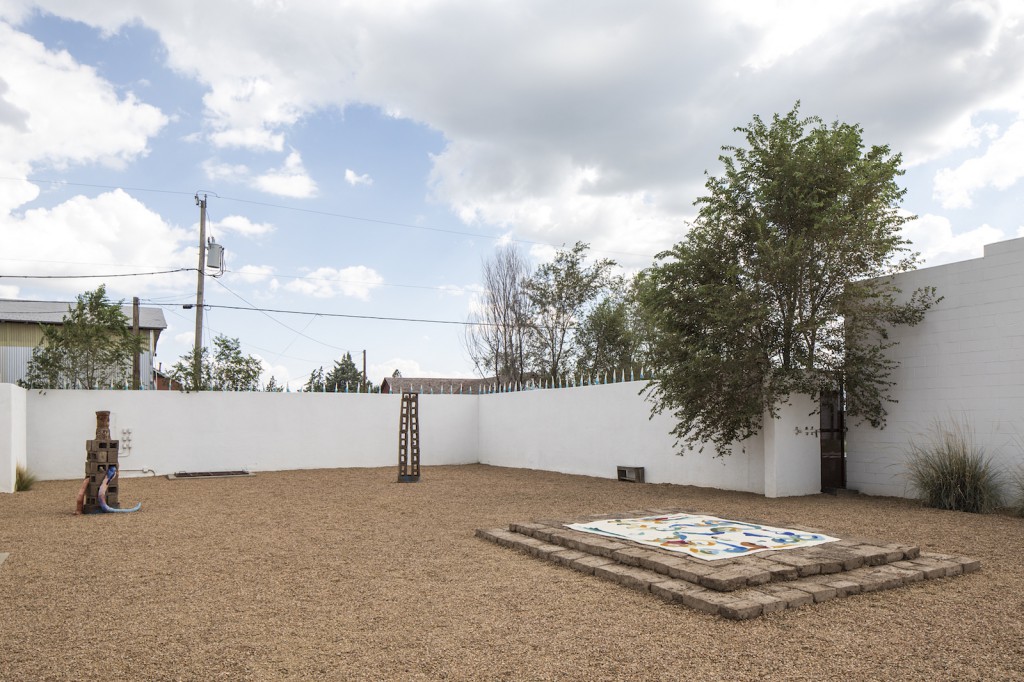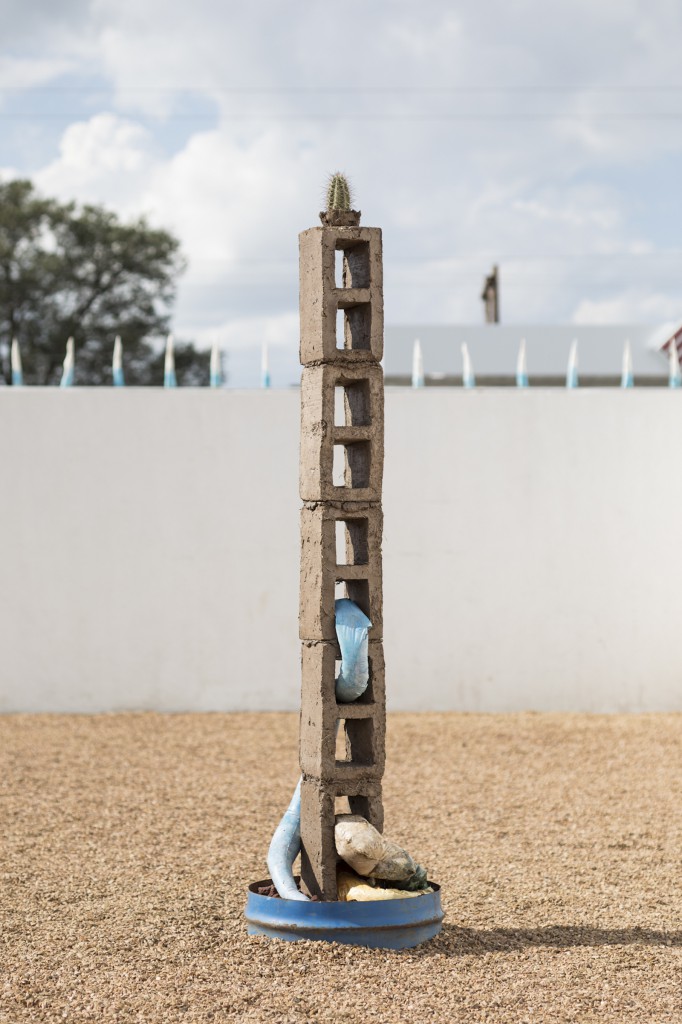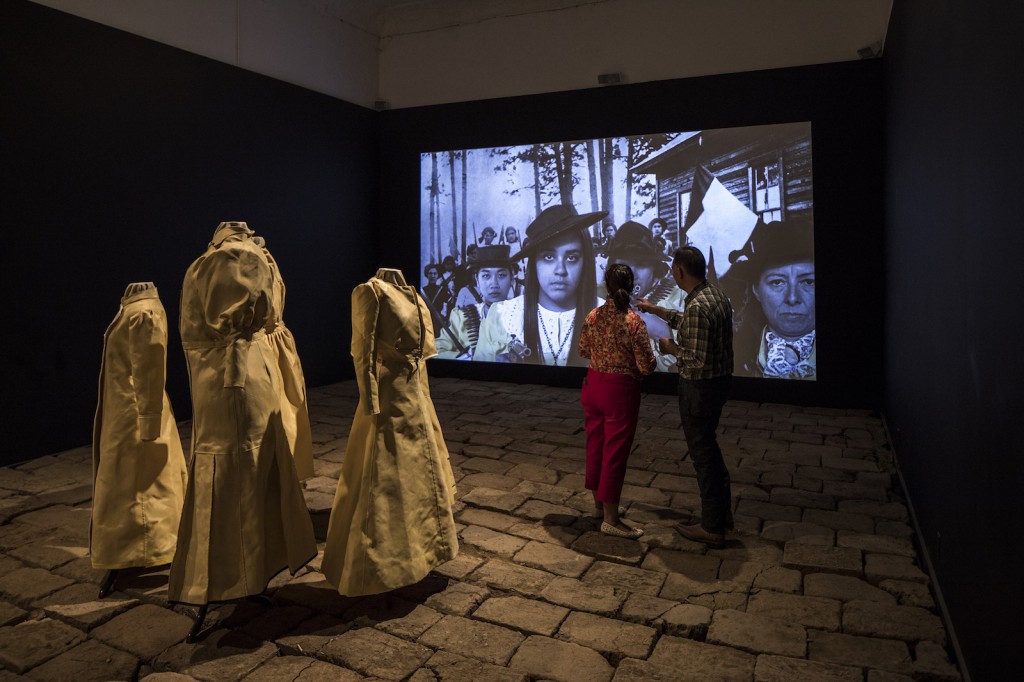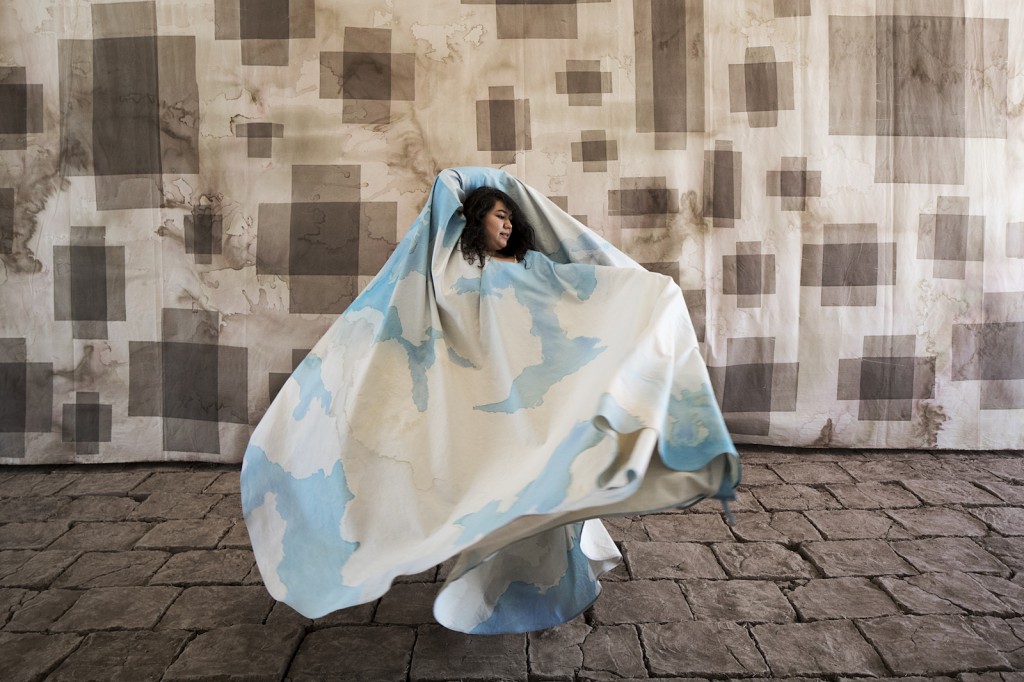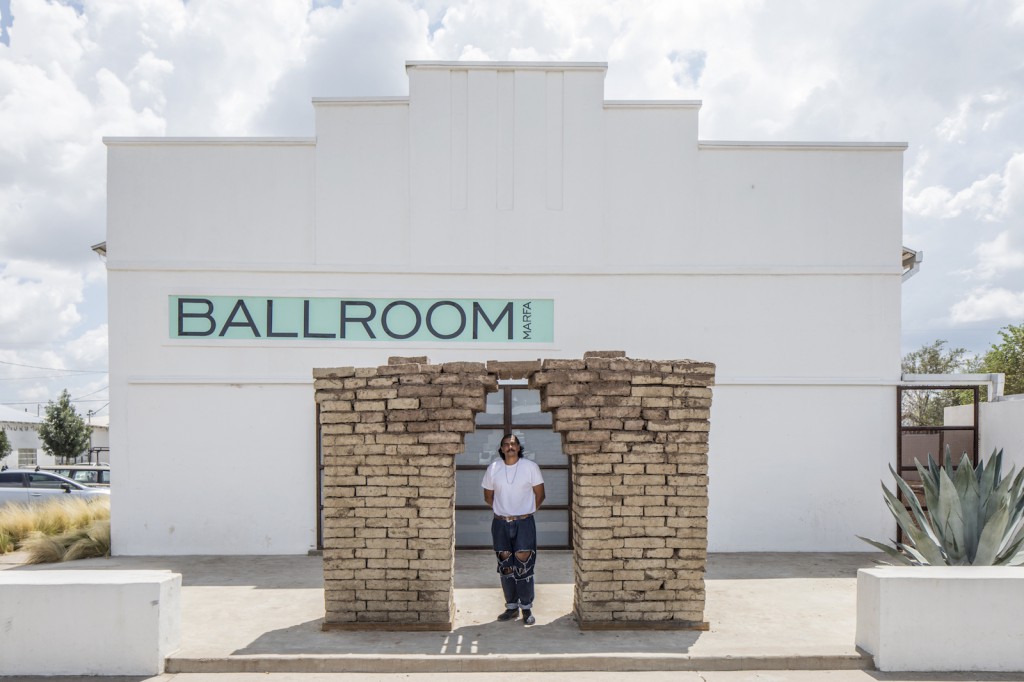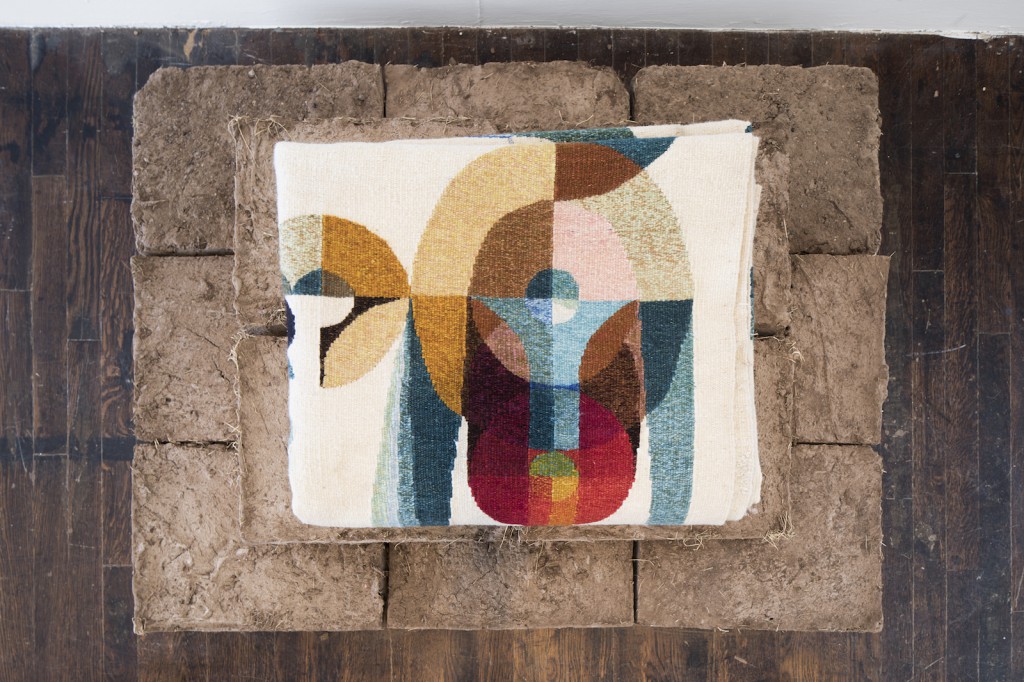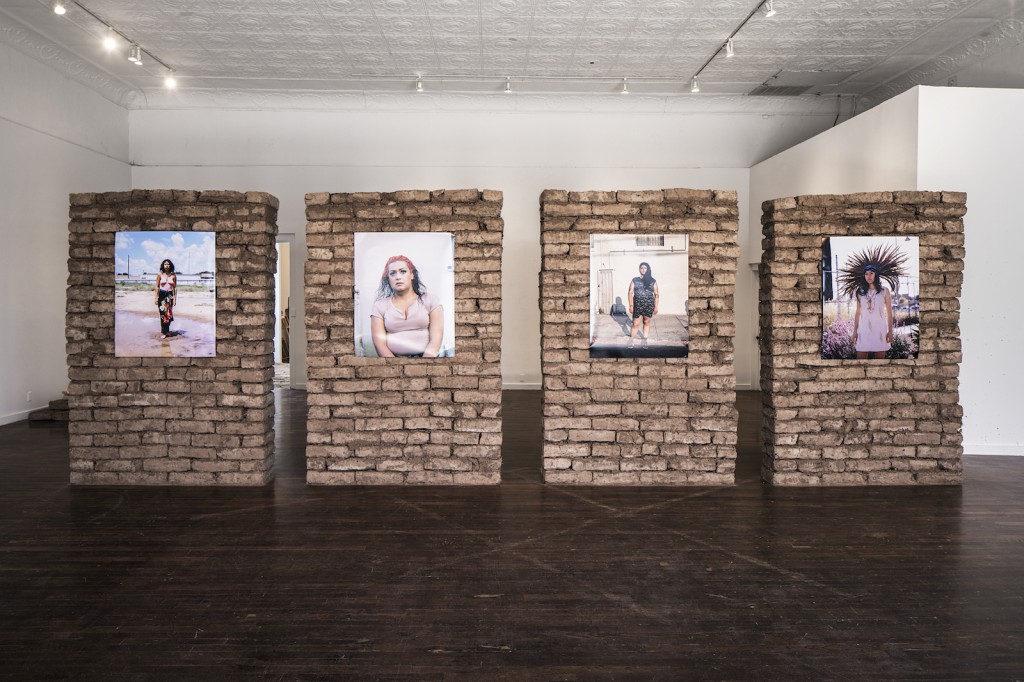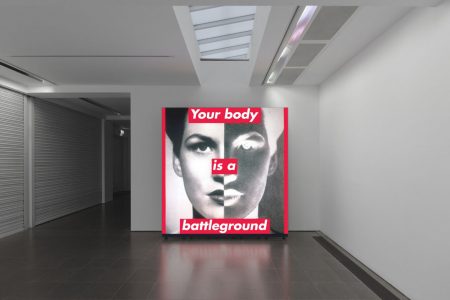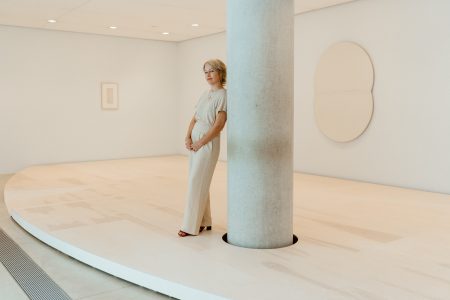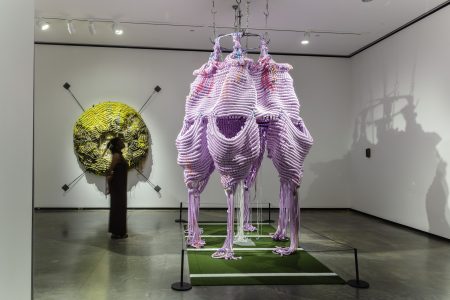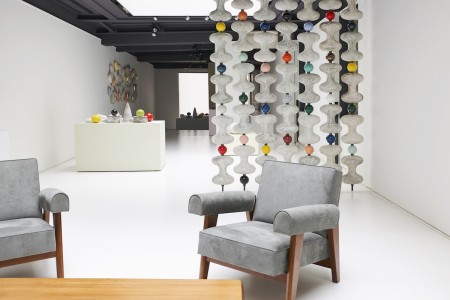
Rafa Esparza’s Ode to Land, Blood and Gold
The American artist explores the visibility of the Latino community in Texas through Tierra. Sangre. Oro, an exhibition at the Ballroom Marfa
For the 2017 Whitney Biennial, American artist Rafa Esparza created a rotunda with adobe bricks sourced from the land and water of his native California in order to give museum visitors the sensorial experience of being “surrounded by that much earth,” as opposed to a white cube. In Tierra. Sangre. Oro, a new exhibition at the Ballroom Marfa, he’s using the bricks to explore “the visibility of Brown people” in the Texas city.
Esparza produced this site-specific installation as part of a summer residence in Marfa. There, he had the idea to create a “Brown laboratory” —that is, a place where guest artists and the local Latino community could explore issues of colonialism, labor, masculinity and queer culture. He also used the exhibition as a vehicle to explore personal history, having been born in Los Angeles to Mexican parents —in Spanish, the title means “Land. Blood. Gold” and his preferred means of communication, the adobe brick, is widespread in northern Mexico.
Curated by Ballroom’s executive director Laura Copelin, the exhibition has covered existing space and layered structural additions to the venue’s façade, galleries and courtyard, in order to produce tangible spaces for dialogue. But Esparza also created some intangible ones: for example, he held an adobe brick-making workshop last week with Marfa Independent School District students, who apart from learning the dying technique were invited to discuss the role of the brick as a metaphor for Texas/Mexico tension, as well as matters of cultural heritage, ecology and politics.
And nowadays, with the possibility of a very different type of construction rising to further sink the divisions between inhabitants on both sides of the border, Esparza’s use of an adobe wall to bring the community together could not be more significant.
Tierra. Sangre. Oro is on display until March 18, 2018
